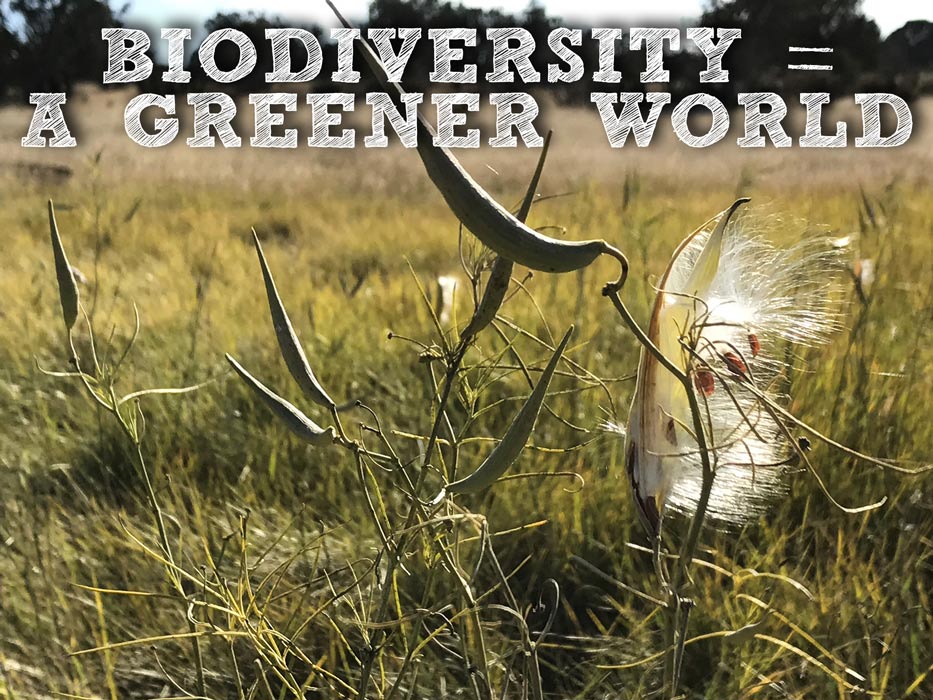One of the key attractions of our Certified Regenerative by AGW program is its practical…

Stewards of the Earth: Survey shows AGW-certified farms protect endangered species and support biodiversity
After years of seeing and hearing anecdotal evidence of the diversity of life on A Greener World’s certified farms and ranches, we decided to do a survey to find out more. It seems intuitive that sustainable farming practices make ecosystems more vibrant, but we wanted to learn straight from the farm.
In partnership with a local university student A Greener World surveyed certified farms across a 2-month period in the Fall of 2018, and the results were astounding. Not only are our farms committed to raising animals sustainably, but their practices are having a measurably positive impact on biodiversity.
What exactly did we learn?
One of the most impressive findings was that every farm surveyed reported using biodiversity-friendly practices. Some practices directly support wildlife, such as creating hedgerows (59%), using non-lethal predator management like guardian animals (48%), scheduling pasture use around predation (30%), and using bat, bee, or bird boxes (59%). Other practices promote general biodiversity, like the use of cover crops (57%), conservation tillage (62%), rotational grazing (87%) and avoidance of conventional pesticides and herbicides (57%).
Farmers and ranchers also shared their own techniques for supporting biodiversity: permaculture practices, planting native flowering plants to support pollinators, and designating restoration and wildlife sanctuary areas (“Other,” 39%). We found that the more wildlife-friendly management practices there were in place, the more species called the farm home—in other words, these practices are working.

A Rich Tapestry
The sheer number of species of plants, animals and insects that call AGW farms home was overwhelming, and showed that in addition to high-quality meat, dairy and eggs, farms are also providing essential ecosystem services. AGW farms are home to birds like finches, nuthatches, swallows, buntings, magpies, pigeons, owls, woodpeckers, orioles, waxwings, tanagers, doves, phoebes; mammals like bats, raccoons, bears, foxes, mountain lions, gophers, field mice, badgers, armadillos, prairie dogs, voles, groundhogs, rabbits, deer, elk, beavers, weasels; snakes, toads, frogs, turtles, lizards, salamanders, fish, bees, wasps, spiders, butterflies, beetles, worms, flies; and an amazing diversity of trees, shrubs, grasses, herbs, flowers, cacti, mosses and fungi.
A Refuge for Endangered Species
We also discovered the presence of keystone predators, including the endangered gray wolf and the threatened grizzly bear. These are important because their presence is integral to maintaining the biodiversity of the ecosystem to which it belongs. With thoughtful management techniques certified by A Greener World, these farms can coexist with native predators and ultimately conserve the natural biodiversity of their land.
Why is Biodiversity Important?
Biodiverse systems rich in plants, animals, insects and fungi are more resilient than industrial monoculture (e.g., one crop for miles). This not only benefits the species that live there, but it also benefits us. Because agriculture functions as a managed ecosystem, a well-managed and biodiverse system is able to improve crucial agricultural components including soil fertility, water provision quality and quantity, and nutrient-cycling. In other words, a healthier ecosystem can mean a more productive farm.
What does this mean for food choices?
With increasing demands for meat, dairy, and eggs from a growing population, it can be tempting to look at production and biodiversity as a zero-sum game—i.e., improvements in one means sacrifices in the other. However, the agroecological systems supported by A Greener World’s farming standards offer an alternative that supports the environment and outlasts the short-term promises of industrial monoculture. And while AGW-certified farms aren’t the only farms using these practices, all AGW farms are using at least some of them—yet another compelling reason for people who care about environmental sustainability, wildlife conservation and healthy ecosystems to look for AGW-certified products. AGW’s farms are living proof of the synergy between productive agriculture and biodiversity conservation, and the ecosystem benefits of well-managed, pasture-raised systems on the natural world.
Photo Credit: Ranney Ranch


